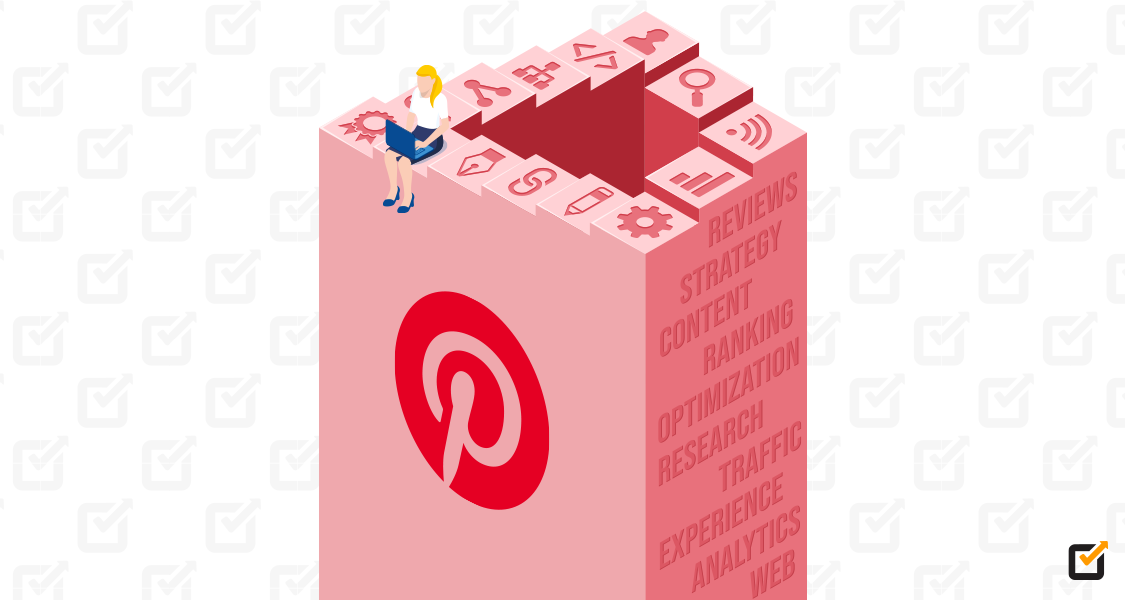Did you know that over 4.95 billion people worldwide are active on social networking sites? That’s more than a third of the world’s population!
The person sitting next to you is probably scrolling through their feed or posting a story right now.
Social media isn’t just a part of our lives; it’s basically our life. It shapes everything, from our friendships to global trends. We share our big wins, rant about our bad days, and stumble upon the coolest stuff, all through these digital spaces.
But have you ever stopped to think about how it all started? Before endless TikTok scrolls and Instagram stories, there was the late 90s when social media was just being born. These early sites weren’t about getting likes or going viral. They were simple hangouts where people connected and chatted. Curious about the OG social media days?
Let’s go back in time and check out the first social media platforms that lit the spark and became the social media giants we can’t live without today. Get ready for a major nostalgia trip!
But when it comes to maintaining your online presence, a social media management tool like Social Champ can be your loyal friend.
Generate Content & Schedule It at the Best Hour
Let the Champ AI Suite take the hassle out of creating your content, schedule it at the best hour, and monitor your analytics with Social Champ.
History & Evolution of Social Media
As we know it today, social media has come a long way from its humble beginnings. The journey began in the late ’90s when the internet was still a novel concept for most people.
The Early Days: Pioneers of Social Networking
In the late ’90s, the concept of first social media was just starting to take shape. The first significant social media platform, Six Degrees, launched in 1997, allowed users to create profiles and connect with friends. This laid the groundwork for future social networking sites.
The Rise of Friendster and MySpace
The early 2000s saw the rise of Friendster in 2002, which helped people connect through mutual friends and quickly gained popularity. In 2003, MySpace revolutionized social networking with customizable profiles, attracting millions of users, including teens and artists, who used it as a platform to share music and creative content.
LinkedIn: Professional Networking Takes Off
Also launched in 2003, LinkedIn took a different approach by focusing on professional connections. It became an essential tool for job seekers and professionals looking to network and advance their careers.

LinkedIn Facebook: The Game Changer
In 2004, Facebook was introduced, initially as a college-exclusive network. It soon opened to the general public and quickly became the dominant social media platform, known for its user-friendly interface and wide range of features.
Microblogging and Real-Time Updates: The Twitter Era
Twitter entered the scene in 2006, bringing the concept of microblogging to the forefront. With its 140-character limit (now 280), it allowed users to share real-time updates and introduced the now-ubiquitous hashtag.
Visual Storytelling: Instagram and Snapchat
Instagram, launched in 2010, focused on photo and video sharing, making visual content a social media staple. Snapchat followed in 2011 with its unique approach of ephemeral messaging, appealing to younger users with its disappearing content.
The Evolution Continues
Each platform is built upon the innovations of its predecessors, creating a diverse and dynamic social media landscape. Today, social media continues to evolve, integrating new technologies like augmented reality and artificial intelligence, continually changing how we connect, share, and communicate.
Featured Article: Social Media Definition: A Definitive Guide in 2024
5+ Early Social Media Platforms and How Their Influence Lives On
Six Degrees pioneered the concept of online social networking in 1997, laying the foundation for modern platforms and the mighty first social media by allowing users to create profiles and connect with friends. Let’s go down memory lane and explore how these platforms influenced the early stages of social media.
Six Degrees
Six Degrees, the first social media platform launched in 1997, was a social networking pioneer. It allowed users to create profiles and connect with friends. Unfortunately, Six Degrees was ahead of its time, and the public did not widely understand or embrace the concept of social media.
Despite its innovative features, the platform struggled to gain traction and failed to attract a large user base. Ultimately, Six Degrees shut down in 2001 due to its inability to sustain itself financially. Despite its short-lived existence, the platform laid the groundwork for future social media platforms by introducing the concept of online social networking based on mutual connections.
Friendster
Friendster, launched in 2002, quickly gained popularity and became one of the first social media networking sites to reach millions of users. It allowed users to connect with friends, share content, and play games.
However, Friendster faced technical challenges, including frequent downtime and slow loading speeds, which frustrated users. Additionally, the emergence of newer platforms like MySpace and Facebook, offering more advanced features and a better user experience, contributed to Friendster’s decline. Despite attempts to rebrand and relaunch the platform, Friendster was eventually discontinued in 2015.
MySpace
Launched in 2003, MySpace was groundbreaking and is included in the list of the first social media platforms to revolutionize online interactions. It allowed users to create highly customizable profiles, including background music, custom layouts, and personalized graphics. MySpace quickly became a hub for musicians, artists, and creatives to showcase their work and connect with fans.

MySpace However, as competing platforms like Facebook gained traction, MySpace struggled to retain users. Changes in ownership and management, along with shifts in user preferences towards simpler and more streamlined platforms, ultimately led to its decline.
MySpace was acquired by Specific Media Group and Justin Timberlake in 2011, and while it still exists today as a music-focused platform, it no longer holds the prominence it once did.
AOL Chatrooms
AOL Chat Rooms were a popular feature of America Online (AOL), one of the earliest internet service providers. and is included in the list of first social media. Launched in the 1980s and 1990s, they allowed users to connect with others who shared similar interests or hobbies.
Users could join chat rooms dedicated to topics ranging from music and movies to sports and politics. However, with the rise of social media platforms like Facebook and Twitter and the decline of AOL as an internet service provider, AOL Chat Rooms gradually lost popularity and were eventually discontinued in 2010.
LiveJournal
LiveJournal, launched in 1999, was one of the earliest blogging platforms to incorporate social networking features. It allowed users to create personal journals, share their thoughts and experiences, and connect with other users through comments and communities.

Live Journal LiveJournal was particularly popular among teenagers and young adults in the early 2000s, offering a space for self-expression and online community building. However, as social media platforms like Facebook and Tumblr gained traction, LiveJournal’s user base declined. While it still exists today, the platform’s influence has waned compared to its heyday in the early 2000s.
Meetup
Meetup, founded in 2002, is a platform that facilitates offline group meetings and events based on shared interests and hobbies. It allows users to create or join groups centered around hiking, book clubs, tech meetups, and more activities.

Meetup The platform gained popularity as a way for people to connect with others in their local communities and participate in real-world events. Despite competition from social media platforms offering online networking, Meetup continues to thrive as a valuable tool for organizing and attending in-person gatherings.
Featured Article: What Are KOLs in Marketing? (And How to Work With Them)
LinkedIn
Launched in 2003, LinkedIn took a different approach to social networking by focusing on professional connections and career development. It allowed users to create detailed profiles highlighting their professional experience, skills, and education.

LinkedIn LinkedIn became an essential tool for job seekers, recruiters, and professionals looking to network and advance their careers. Unlike other early social media platforms, LinkedIn maintained its relevance by catering to a niche audience and providing valuable networking opportunities. LinkedIn continues to thrive as the leading professional networking platform, with over 700 million users worldwide.
Facebook
Facebook, founded by Mark Zuckerberg and his college roommates in 2004, quickly became the dominant force in social media. It started as a college-exclusive platform before expanding to other universities and eventually to the general public. Facebook’s clean interface, real-name policy, and innovative features, such as the News Feed and “like” button, propelled it to unprecedented success.
Despite facing controversies and challenges over the years, including privacy concerns and issues related to misinformation, Facebook remains one of the most widely used social networking platforms globally, with billions of active users.
X (Formerly Twitter)
Twitter, launched in 2006, introduced the concept of microblogging, allowing users to share thoughts and engage in public discourse in real-time. It was characterized by its 140-character limit (now 280), which encouraged brevity and conciseness. Twitter quickly became a platform for breaking news, live events, and public conversation.

X Fast forward to 2022, and tech billionaire Elon Musk swooped in, acquiring Twitter and sparking a whirlwind of changes. One of the biggest? A complete rebrand. Twitter, the little blue bird, took flight as X, leaving behind its familiar logo and name.
In Conclusion
The emergence of the first social media platforms marks a pivotal moment in human communication and connectivity history. From the pioneering days of Six Degrees to the revolutionary impact of platforms like MySpace and Facebook, these early networks laid the groundwork for the digital landscape we navigate today.
Despite their eventual discontinuation or evolution, their influence lives on, shaping how we connect, share, and interact online. These platforms introduced us to social networking and sparked a digital revolution that continues redefining how we engage with technology and each other. As we reflect on the origins of social media, we recognize the significance of these early platforms in paving the way for the vibrant and interconnected online communities we inhabit today.















2 thoughts on “First Social Media: The Evolution & Influence in 2024”
This article on the evolution and influence of social media is truly enlightening! It’s fascinating to see how social media platforms have transformed over the years and continue to shape our communication and culture in 2024.
It’s crucial to understand where things started to fully appreciate how far social media has come. Loved the section on the influence of early social media on current trends.